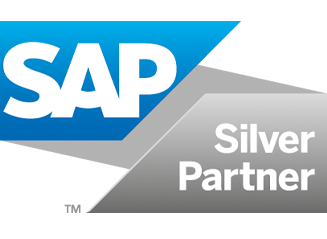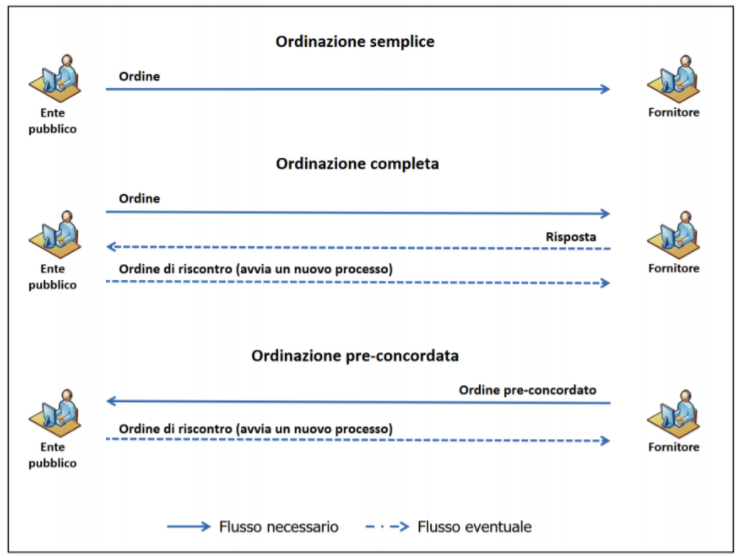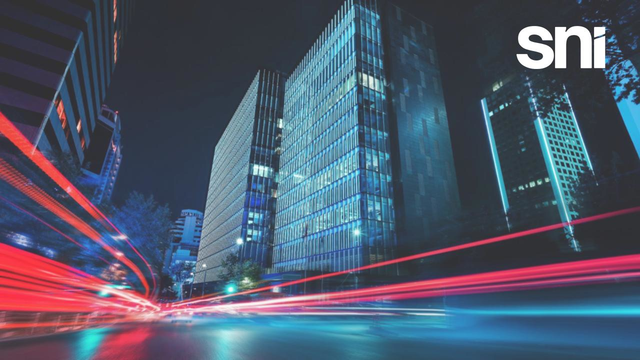Italy started digitalization of public procurement in 2014. Government successfully implemented electronic invoicing in all public procurement transactions. A few years later, they decided to extend this regulation to ordering documents.. The system of electronic orders has been launched in 2020.
Mandatory B2G e-invoicing
Italy designed FatturaPA for public procurement transactions. It is the official electronic invoice format for public authorities. Use of FatturaPA between taxpayers and public entities has been compulsory since 2014. The Sistema di Interscambio (SdI) exchange system is the portal for sending and receiving e-invoices. All e-invoices issued are transmitted via SdI to the customer by identification of buyers’ IPA code.
Mandatory B2G e-ordering
As a first phase, public entities belonging to the Italy’s National Health System or Servizio Sanitario Nazionale (SSN) and their suppliers must submit all ordering documents. Those include purchase order (ordine), initial order (ordine iniziale), order replacement (ordine sostitutivo), revocation order (ordine di revoca) and pre-agreed order (ordine pre-concordato).
Mandatory electronic ordering of goods and services started on 1 February 2020 and 1 January 2021 respectively. But there is a grace period until 1 January 2021 for orders of goods and 1 January 2022 for orders of services. The obligation will expand to the public entities in other industries incoming years.
During the grace period, Italian public entities will continue to pay for orders even if no e-orders have been transmitted through the platform.
E-orders are not submitted via SdI platform like e-invoices. Orders’ Routing Node is the exchange system of e-orders. It is officially called NSO (Nodo di Smistamento degli Ordini). NSO platform not only manages the validation and transmission of orders but also execution documents such as transport documents and work progress reports. Submission of execution documents through NSO is not compulsory yet.
In order to receive electronic orders, all suppliers of the national health service bodies (SSN) must have an electronic address for NSO.
What are the e-ordering processes?
E-ordering process can be initiated by the customer or by the supplier.
- Simple ordering (Ordinazione semplice): It only includes an order;
- Full ordering (Ordinazione completa): It includes:
- an order,
- an order response (risposta): document which supplier uses to accept, decline, or replace orders received from customers
- an acknowledgement or abutment order (ordine di riscontro): document which customer use to accept, decline, or replace orders received from suppliers
- Pre-agreed ordering (Ordinazione pre-concordata): It includes:
-
- Pre-agreed ordering (Ordine pre-concordata): It is a document equivalent to the order, but issued by the supplier to the customer with the prior consent of the latter.
- an acknowledgement or abutment order (ordine di riscontro)
Ente pubblico: Public entity
Fornitore: Supplier
Flusso necessario: Necessary transmission
Flusso eventuale: Possible submission
What are the modes of communication with NSO:?
1)WEB PORTAL
2)CERTIFIED ELECTRONIC MAIL (PEC)
3) INTEROPERABILITY
- Web Service
- SFTP
4) PEPPOL
Transmission via Peppol is only possible by using the intermediaries, Peppol Access Point providers accredited by NSO. They can use the following transmission channels:
- “PEC” Service
- Web Service
- SFTP.







